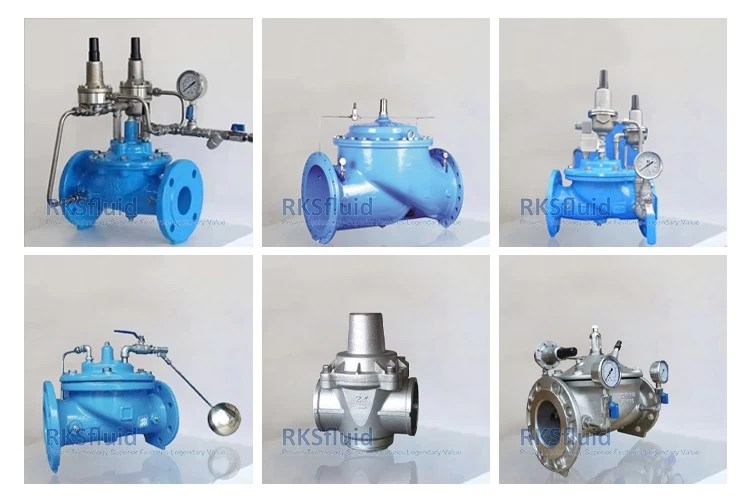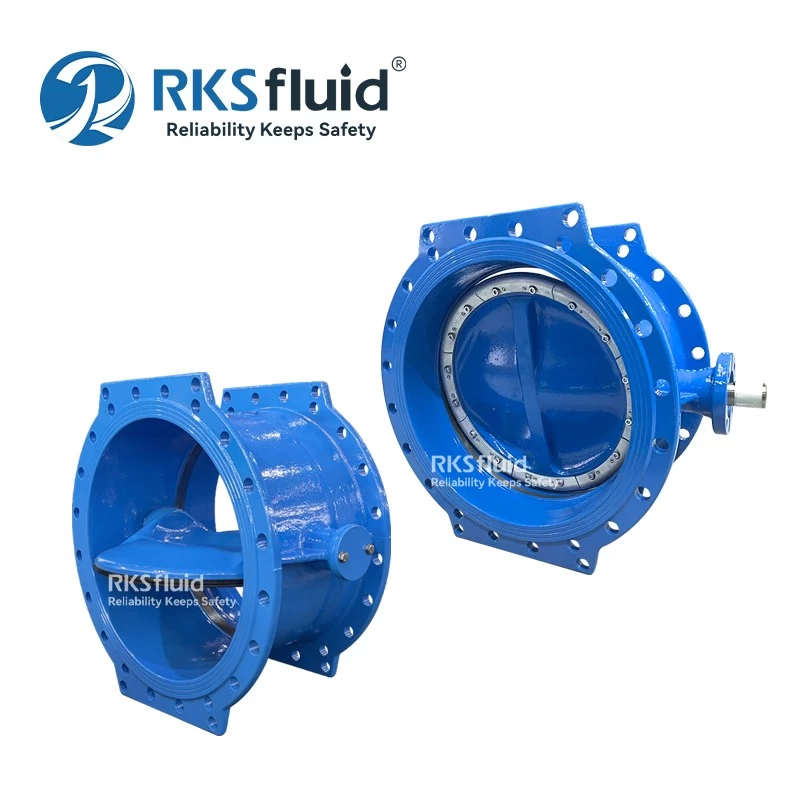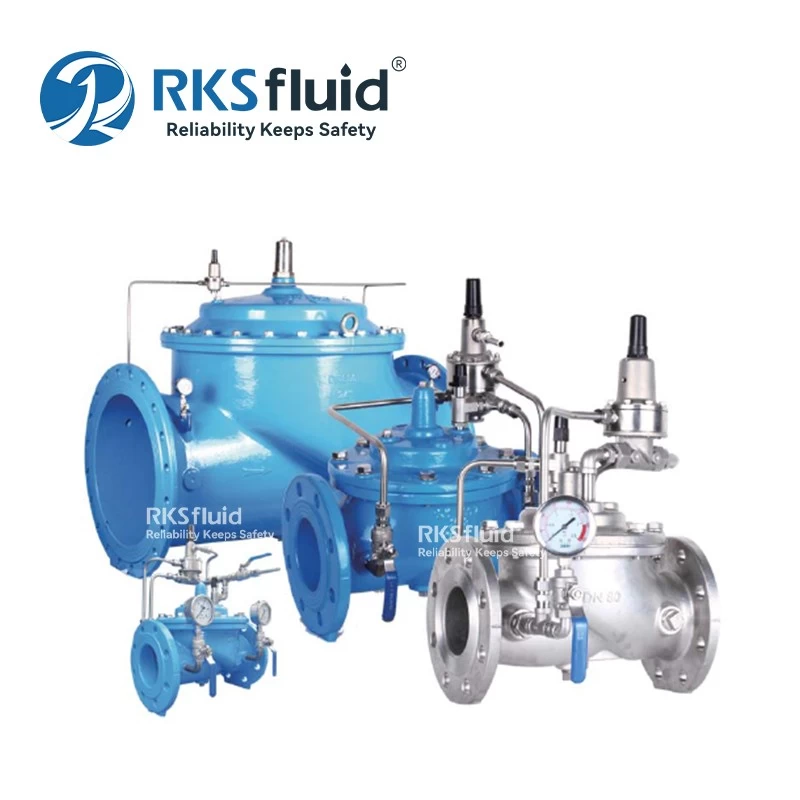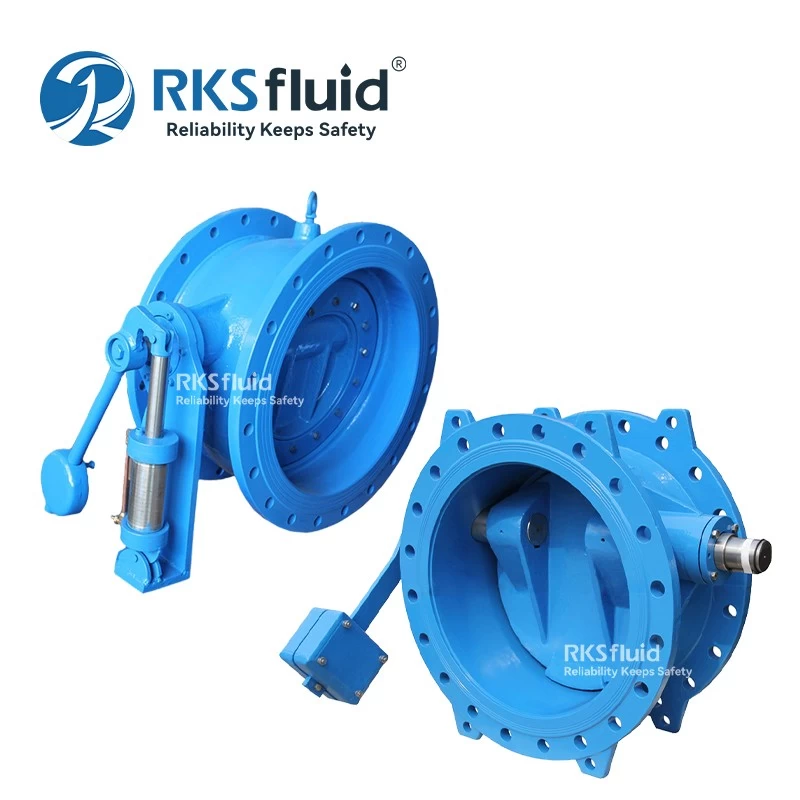- Main Product
- Contact Us
-
RKSfluid Flow Control Company
Web: www.rksfluid.com
Tel: +86 24 2318 0188
Fax: +86 24 2318 0788
Mail: info@rksfluid.com Contact Now
- Subscribe
-
Get email updates on new products
News
How Does a Pressure Reducing Valve (PRV) Work?
Pressure-reducing valve is also called pressure-stabilizing valve, pressure-reducing pressure-stabilizing valve.
A Pressure Reducing Valve (PRV) is an Automatic Control Valve designed to reduce a higher unregulated inlet pressure to a constant, reduced downstream (outlet) pressure regardless of variations in demand and/or upstream (inlet) water pressure.
Here’s how it works:
1. Inlet Pressure vs. Outlet Pressure
Inlet Pressure (High Pressure Side): The fluid enters the valve at a higher pressure from the supply system.
Outlet Pressure (Lower Pressure Side): The PRV reduces the pressure of the fluid and ensures a consistent, lower pressure at the valve's outlet.
2. Main Components
Valve Body: The housing that contains all the internal parts and controls the fluid flow.
Spring and Diaphragm Assembly: These work together to sense and respond to pressure changes.
Adjusting Screw (or Knob): Allows the user to set the desired outlet pressure.
Valve Seat and Disc: Control the fluid flow by opening or closing to reduce pressure.
3. Basic Working Mechanism
When high-pressure fluid enters the valve, it passes through a partially open valve seat.
Inside the PRV, the diaphragm senses the downstream (outlet) pressure and adjusts the valve position to maintain a steady, reduced pressure at the outlet.
The spring tension (set by the adjusting screw) helps to control the force on the diaphragm. When the downstream pressure reaches the desired level, the valve automatically adjusts to reduce or stop further flow, keeping the pressure stable.
If the outlet pressure drops (e.g., due to increased water demand), the valve will open further, allowing more fluid to pass and raise the pressure. If the outlet pressure increases, the valve closes slightly to reduce the pressure.
4. Feedback Loop
PRVs operate based on a feedback loop mechanism. They continuously sense the outlet pressure and make fine adjustments to regulate the flow. The diaphragm moves up or down depending on the outlet pressure, which either opens or closes the valve to maintain the desired pressure.
5. Benefits of PRV
(1)Protects Plumbing Systems: Prevents damage caused by high pressure, such as burst pipes or leaks.
(2)Improves Safety and Efficiency: Ensures consistent pressure in a range of applications (e.g., residential water systems, industrial machinery).
(3)Energy Savings: Reduces energy consumption by preventing pumps from working harder than necessary.
In summary, a PRV automatically regulates and maintains lower pressure at its outlet by adjusting valve position in response to changes in downstream pressure, ensuring the system operates safely and efficiently.
 |
RKSfluid specializes in manufacturing various types of pressure reducing control valves, dedicated to providing high-quality fluid control solutions for a wide range of industries. As an experienced manufacturer, RKSfluid looks forward to offering you professional consultations and customized services.











